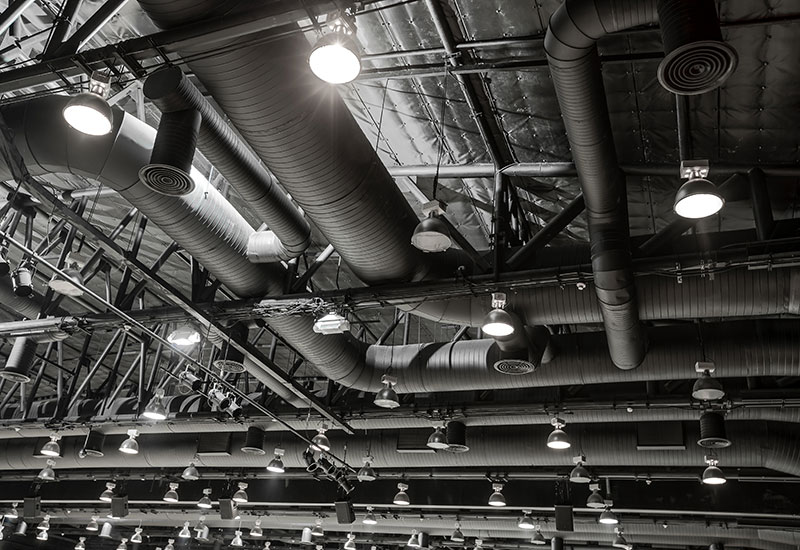It goes without saying that air pollution is a known health risk. But when we hear these words, we very rarely consider the health consequences that stem from exposure to indoor air pollution caused by poor HVAC systems.
Such concerns have only recently entered mainstream conversation with the onset of the Covid-19 pandemic, which saw the connection between human health and the spaces we occupy become more important than ever before.
The presence of indoor air pollutants can decrease quality of life for occupants, affect productivity, increase liability for building owners, and even reduce property re-sale values. In more extreme cases, we may even see the occurrence of ‘sick-building’ syndrome. This refers to a condition in which inhabitants of a particular building experience symptoms of illness.
Air pollutants have been recognised to not only increase susceptibility to cardiovascular, reproductive and neurological issues, but also exacerbate existing health conditions.
In fact, exposure to poor indoor air quality (IAQ) is the sole cause of an estimated 5 million deaths around the world, every year. This comes as a result of the number of indoor pollutants being two to five times higher than outdoor environments. Of the many factors that can compromise IAQ, the most common causes include improper building design, inadequate ventilation, and the presence of volatile organic compounds from furniture, carpets, paints and cleaning products.
Fortunately, robust and reliable HVAC systems can help increase air flow around the home and lessen the concentration of contaminants within your environment.
Robust and reliable HVAC systems
While HVAC systems operate efficiently when first installed, as the system ages, it’s common to see efficiency ‘drift’ away from the original levels. This pattern is known as performance drift and can lead to system deficiencies or failures, causing our HVAC systems to deteriorate. The problem is that inefficient HVAC systems are unable to adequately regulate humidity within an indoor environment.
Typically, air conditioners remove moisture from the air to keep the environment feeling cool. When the system functions inadequately, rising humidity levels negatively impact occupant comfort and health.
Humidity can promote the growth of viruses, bacteria, and fungi, increasing the risk of ‘sick-building’ syndrome and the occurrence of respiratory problems, allergies and related symptoms. Poor quality HVAC systems pose a particular risk in this region, where humidity rates are already high in cities located along the coastline of the Arabian Gulf.
It’s unfortunate to see many facility operators accept the loss of efficiency in mechanical systems as inevitable. Outdated HVAC systems are designed as an assembly of independent components with limited connectivity or performance monitoring technology. By adopting a more holistic approach through a combination of intelligent strategies and high-performing systems, we can be sure to maintain the best possible levels of IAQ.
Active Performance Management practices, supported by services such as pump manager minimise and prevent performance drift. The combination of digital capabilities and performance management services relies on cloud-based technology and embedded intelligence to optimise the efficiency and performance of HVAC systems. Pump manager can either be integrated into new systems, or retrofitted to upgrade existing systems, with the power to deliver insights that lead to informed decisions and immediate actions, ultimately helping to optimise indoor air quality.
This smart technology uses highly accurate fluid flow data to support performance efficiency through predictive maintenance. Pump manager also provides remote access to data collected through on-going tracking and analysis, which can then be supplied to multiple stakeholders. If any changes in operations or potential issues arise, such as leaks, action can be taken immediately to prevent the problem escalating to the point of failures and service disruptions. Addressing potential issues early on helps to lower maintenance costs and also ensures the highest level of IAQ.
 Poor quality HVAC systems pose a particular risk in this region. [Image: CW archives]
Poor quality HVAC systems pose a particular risk in this region. [Image: CW archives]
One of the most advanced methods for preventing and reversing performance drift in HVAC systems is through digital twin technology. Machine-learning capabilities such as OPTI-POINT compare data with results from similar buildings and systems. OPTI-POINT, uses digital twin technology to test and compare options for optimisation before implementing changes.
The process of updating algorithms is similar to the way a Sat NAV system recalculates a new route when a change of direction is observed. Constantly updated control maps enable optimised performance at the device, family, sub-system, and process levels.
The final approach in optimising performance in order to maintain high IAQ is through integration of district central cooling networks a properly designed and constructed district cooling system (DCS) will always have a redundancy plan in place in the form of standby cooling capacity, to offset the risk of error.
Individual buildings cannot achieve this level of reliability through a conventional air-conditioning system within the building itself. In the interest of improved IAQ, a higher degree of occupant comfort, and in the interest of your building’s reputation, a DCS offers a safer, more dependable solution.
Considering that occupants spend approximately 90% of their time indoors, the need to address IAQ is vital. Maintaining and even improving optimal performance of HVAC systems will help to prevent disease, prolong life and promote human health through the creation of safe and reliable solutions. Improving performance will also help in recording economic savings by lowering maintenance and operational costs.
[ad_2]
Originally Appeared Here